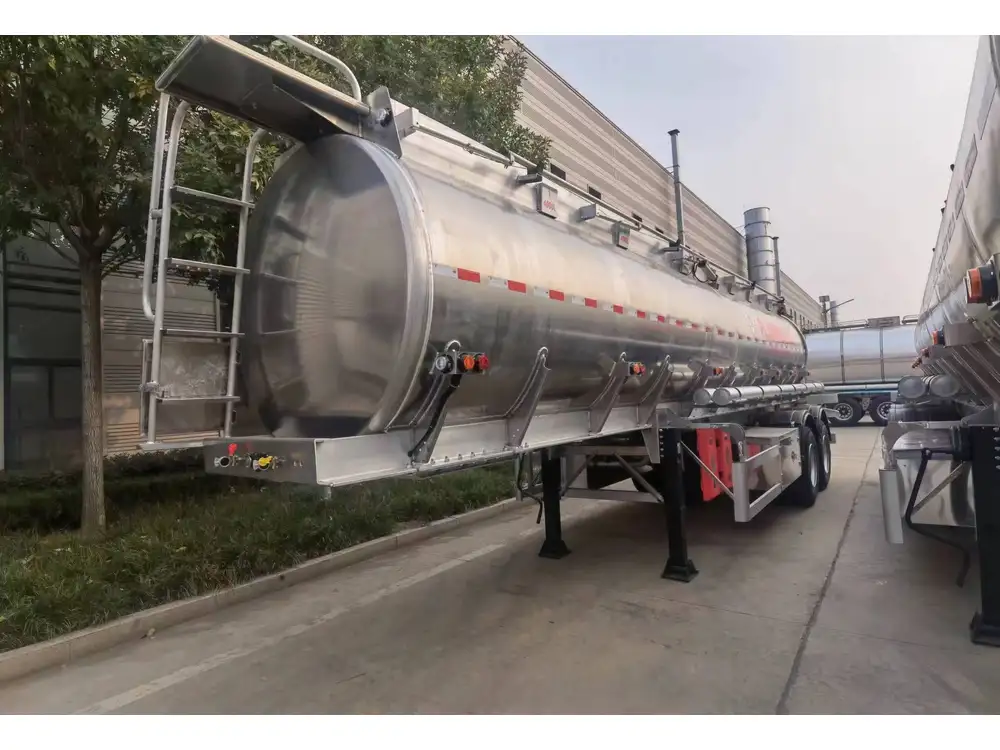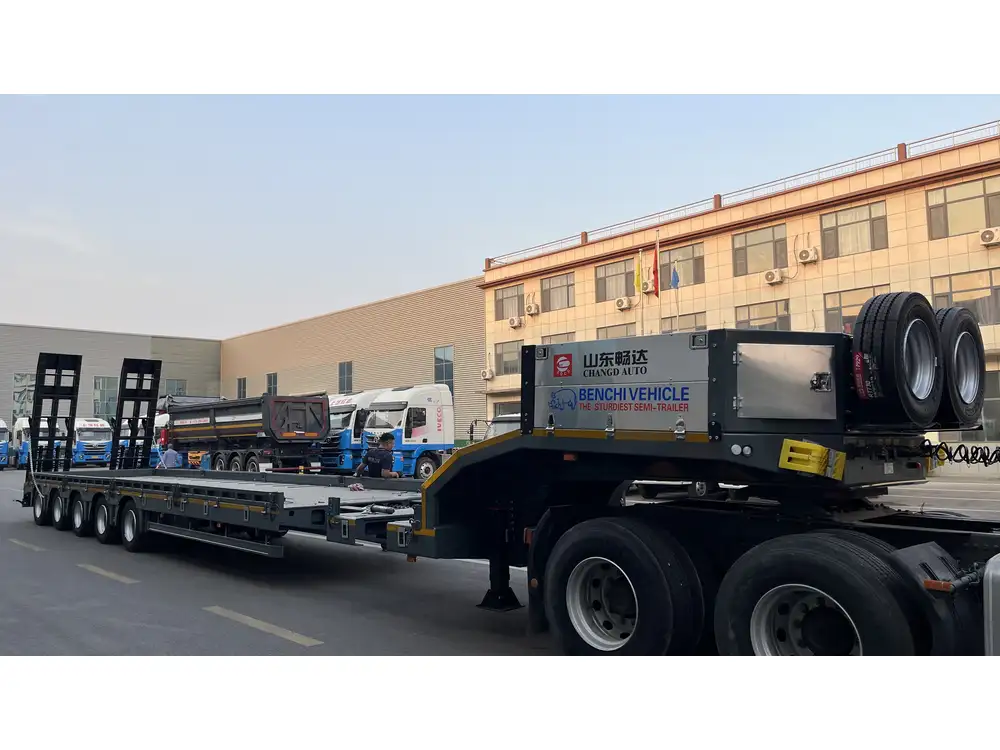When it comes to managing propane tank trailers, understanding the internal valve adjustment is not just advantageous—it’s essential. The internal valve plays a critical role in the overall functionality and safety of your propane tank trailer. This in-depth guide will offer insights, procedures, and troubleshooting tips to ensure that your propane transportation is safe and efficient, addressing potential issues and providing detailed information to enhance your knowledge and proficiency.
Understanding Propane Tank Trailer Internal Valves
What is an Internal Valve?
An internal valve is a crucial component located within the structure of a propane tank trailer. It regulates the flow of propane, controlling both the filling and dispensing processes. Properly adjusting this valve ensures an efficient flow rate, minimizes the risk of leaks, and helps maintain optimal pressure levels within the tank, which is vital for safety and performance.

Why Adjustment is Necessary
Adjustments are often necessary due to:
- Temperature fluctuations: Changes in ambient temperature can affect pressure, requiring valve recalibrations.
- Wear and tear: Regular use can lead to degradation, impacting function and safety.
- Regulatory compliance: Following safety regulations often requires maintaining equipment in optimal working order.
Steps to Adjust the Internal Valve on a Propane Tank Trailer
Precautions Before You Begin
Safety should always be your foremost concern. Prior to proceeding with any adjustment:
- Wear appropriate safety gear (gloves, goggles).
- Ensure that the tank is depressurized.
- Work in well-ventilated areas to avoid potential gas inhalation.
- Have a fire extinguisher readily accessible.

Necessary Tools and Equipment
To effectively adjust the internal valve, gather the following tools:
- Adjustable wrench or socket set
- Torque wrench
- Screwdriver set
- Safety goggles
- Gloves
Step-by-Step Adjustment Process
Depressurize the Tank
Ensure that all valves linked to the tank are closed. This step is critical to ensure safety while performing any adjustments.Access the Internal Valve
Depending on your propane trailer model, this may require removing covers or shields. Consult the manufacturer’s manual for specifics.Inspect for Damage
Before making any adjustments, assess the internal valve for signs of wear or damage. Check for cracks, corrosion, or any foreign substances obstructing operation.Setting the Valve
- Locate the adjustment screw on the valve assembly. This may vary based on the valve type.
- Use a screwdriver to turn the adjustment screw clockwise to decrease flow or counterclockwise to increase flow. A quarter turn is usually sufficient as a starting point.
- Make minor adjustments as needed based on the observed flow rate.
Torque Specifications
After adjustment, utilize a torque wrench to ensure all components are tightened according to your manufacturer’s specifications. This secures the valve and prevents future leaks.Reassemble Any Removed Parts
Carefully put back any protective covers or shields. Ensure all bolts and screws are fastened securely.Testing the System
Gradually open the main supply valve to pressurize the tank. Carefully monitor for any leaks around the valve area using a soap solution. A bubbling reaction indicates a leak, requiring you to revisit the adjustments.Final Inspection
Conduct a thorough visual inspection to ensure everything is in order. Make sure hoses are connected tightly and that no gas is escaping.
Common Challenges When Adjusting Propane Tank Trailer Internal Valves

Leakage Issues
One of the most significant issues faced during adjustment is leakage. This can result from improper tightening or worn seals. Regular inspections and routine maintenance help mitigate this risk.
Difficulty in Accessing Valves
Accessing the internal valve might be complicated depending on your trailer model. Familiarize yourself with your specific design or consult with professionals for detailed advice.
Pressure Imbalances
Pressure imbalances can occur due to weather changes. Continuous monitoring after adjustment is essential to ensure that the system remains in optimal condition.

Maintenance Tips for Propane Tank Trailers
Regular Inspections
Frequent inspections should be part of your routine maintenance. Check for wear and tear not only on the valves but also throughout the trailer components.
Suggested Inspection Checklist
| Item | Frequency | Notes |
|---|---|---|
| Valve operation | Monthly | Test flow and leakage |
| Hose condition | Quarterly | Look for cracks or damage |
| Pressure gauges | Ongoing | Ensure accurate readings |
| Overall cleanliness | Monthly | Prevent corrosion and rust |

Replacement of Parts
If any component shows deterioration, replace it promptly to avoid compromising the trailer’s integrity and safety. This includes seals, hoses, and valves.
Compliance with Regulations
Stay informed about local and national regulations regarding propane transportation. This includes understanding proper valve adjustments, maintenance schedules, and safety practices.
Troubleshooting: Common Problems and Solutions

Under-Pressurization
Under-pressurization can occur due to a variety of factors, including improper valve settings or leaks.
- Solution: Reassess your valve adjustments and inspect for any leaks or damaged components.
Over-Pressurization
Over-pressurization can lead to dangerous situations, including valve rupture.
- Solution: If over-pressurization is suspected, immediately depressurize the tank and check the pressure relief valves.
Flow Issues
If you notice inconsistent flow from the propane tank, this could indicate a blockage or misalignment in the internal valve.
- Solution: Conduct a thorough inspection of the valve and associated hoses for any clogs, and recalibrate as needed.

The Importance of Professional Assistance
While this guide provides a comprehensive overview for adjusting and maintaining propane tank trailer internal valves, certain situations may require professional intervention.
Reasons to Seek Professional Help
- Complex Systems: If your trailer features intricate valve systems that are beyond standard adjustment procedures.
- Safety Concerns: When leaks persist despite your adjustments, involving a licensed technician is paramount for safety.
- Regulatory Compliance: Professionals ensure that all adjustments meet local and national safety standards.
Conclusion
Adjusting the internal valve on a propane tank trailer is an essential task that emphasizes safety, efficiency, and regulatory compliance. A thorough understanding of valve mechanics, combined with proper techniques and tools, can allow for effective management of your propane tank trailer. Regular maintenance and periodic professional consultations ensure that your trailer operates smoothly and safely, significantly reducing risks associated with propane transport. By following this detailed guide, not only will you ensure your equipment operates effectively, but you will also extend its lifespan and maintain high safety standards.



